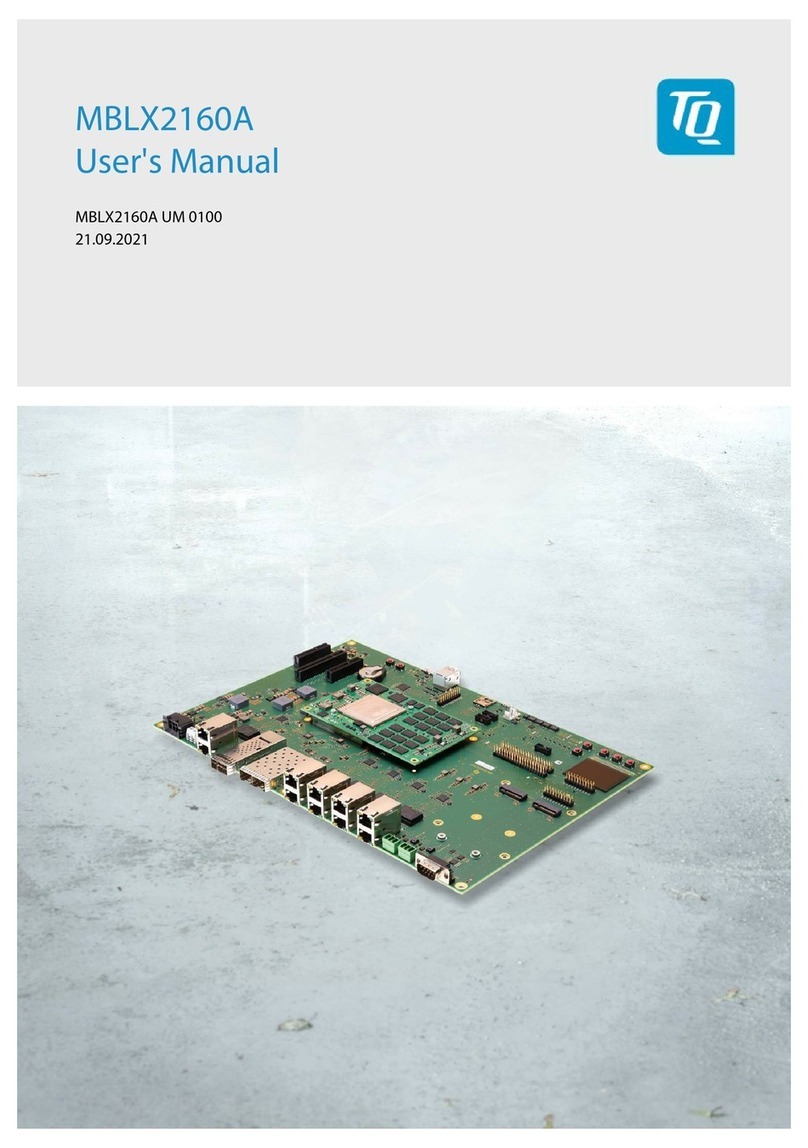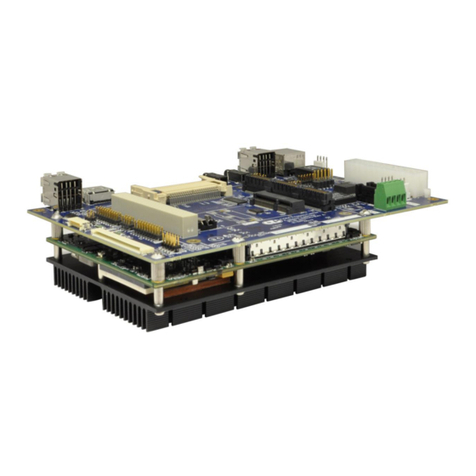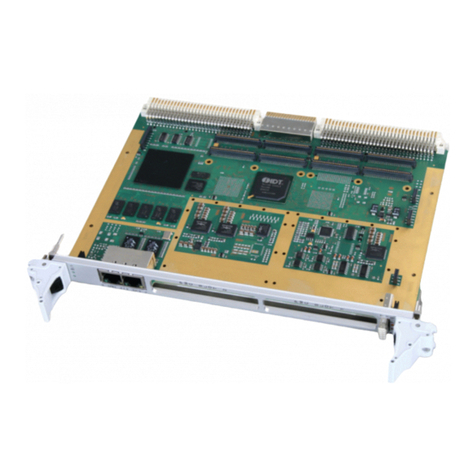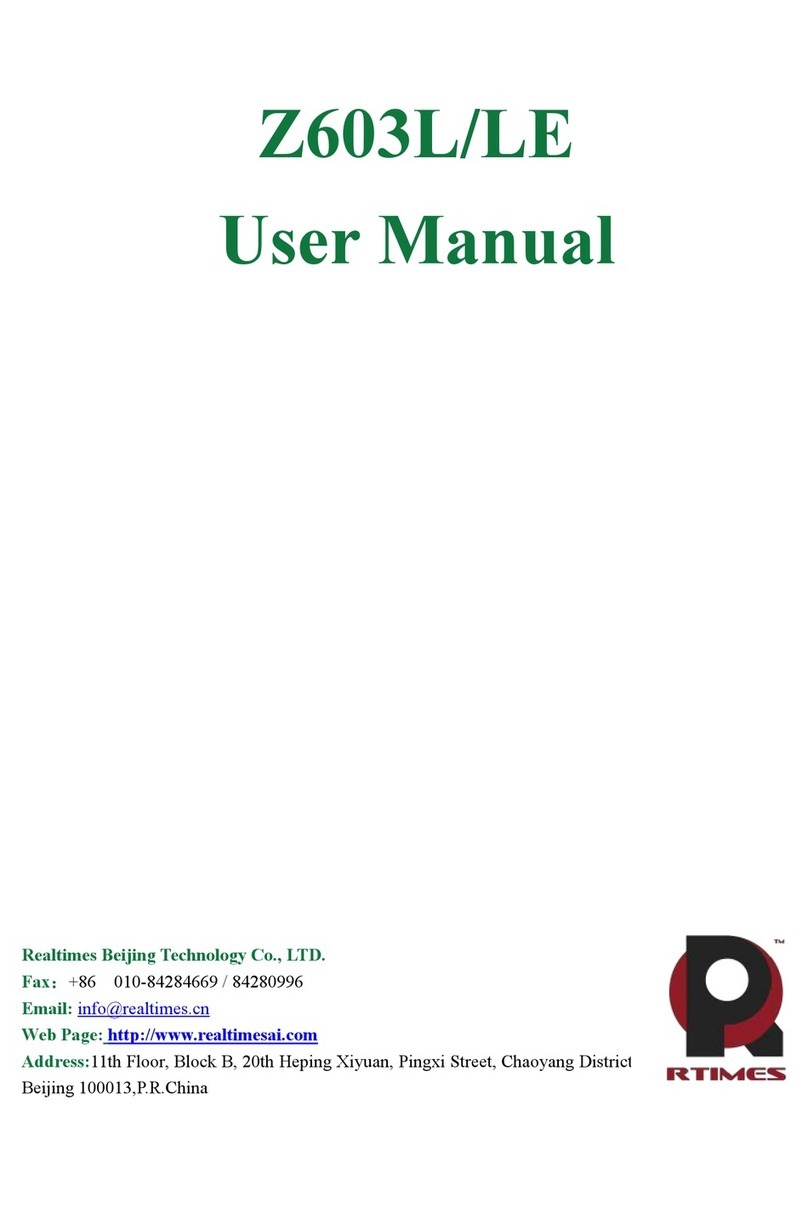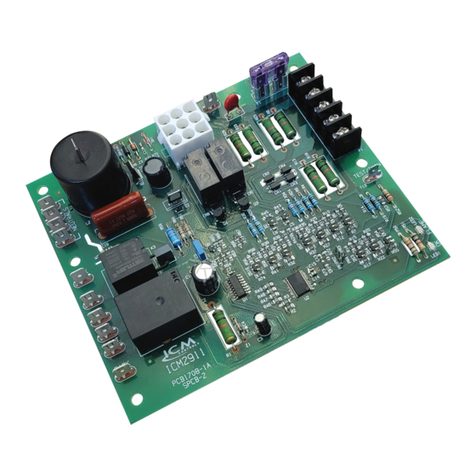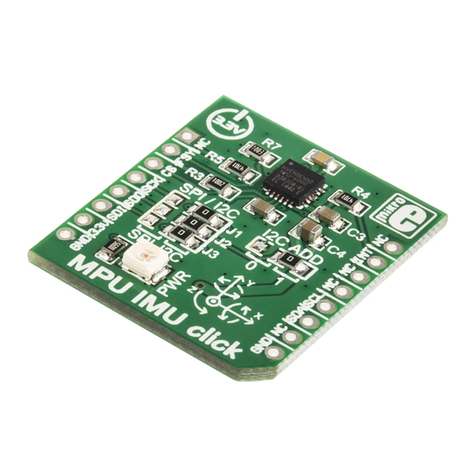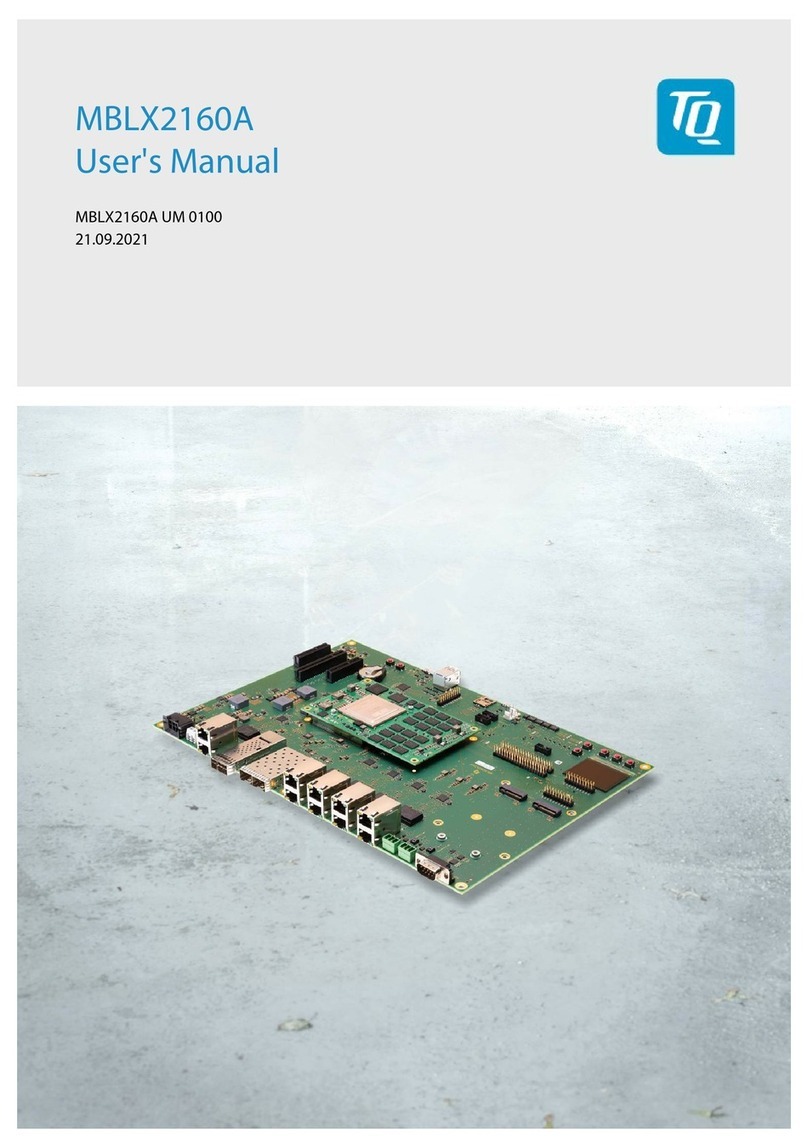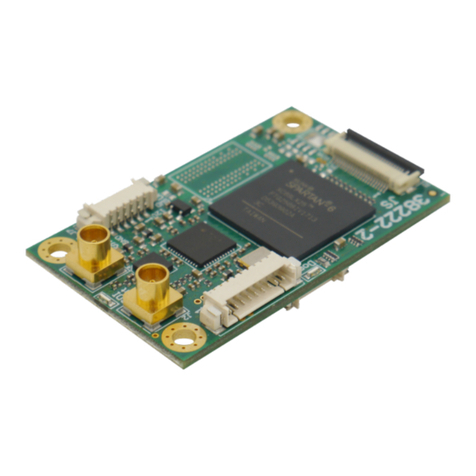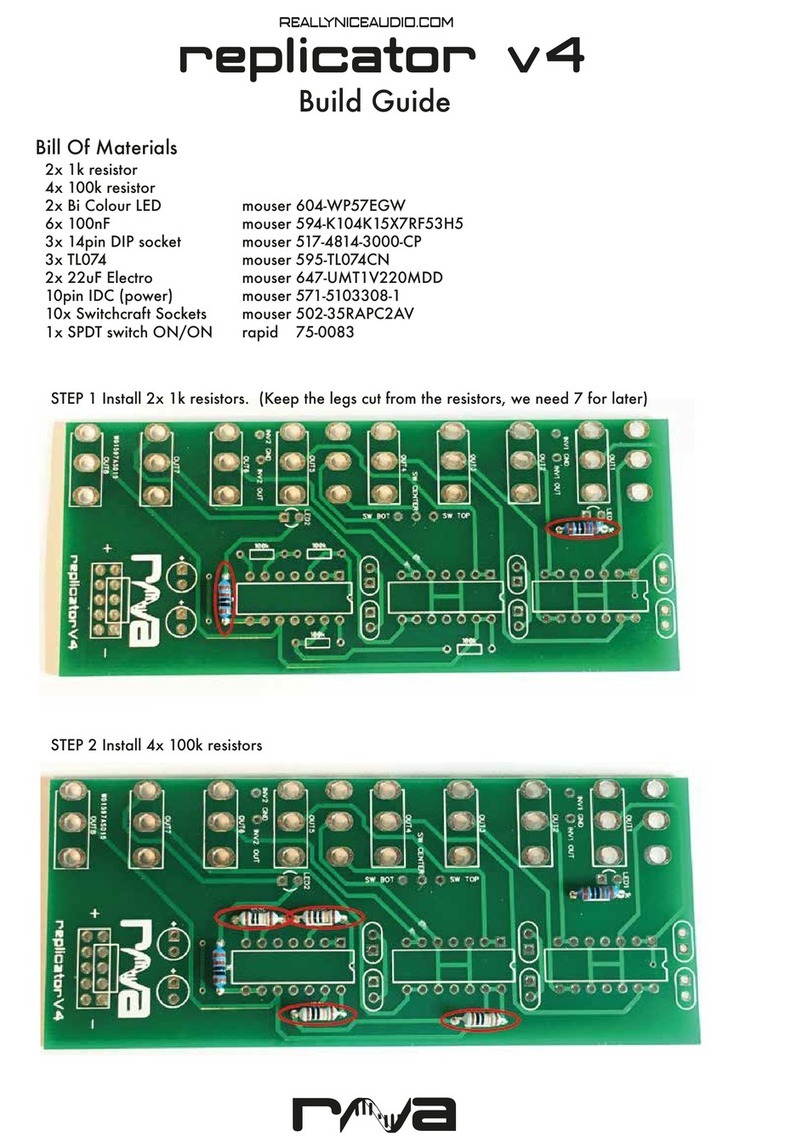Seco Qseven CQ7-A30 User manual

CQ7-A30
Cross Platform Carrier Board for Qseven®
Rel.2.0 Compliant modules

CQ7-A30
CQ7-A30 - Rev. First Edition: 1.0 - Last Edition: 2.0 - Author: S.B. - Reviewed by G.G. Copyright © 2016 SECO S.r.l.
2
All rights reserved. All information contained in this manual is proprietary and confidential material of SECO S.r.l.
Unauthorised use, duplication, modification or disclosure of the information to a third-party by any means without prior consent of SECO S.r.l. is prohibited.
Every effort has been made to ensure the accuracy of this manual. However, SECO S.r.l. accepts no responsibility for any inaccuracies, errors or omissions herein.
SECO S.r.l. reserves the right to change precise specifications without prior notice to supply the best product possible.
For further information on this module or other SECO products, but also to get the required assistance for any and possible issues, please contact us using the
dedicated web form available at http://www.seco.com (registration required).
Our team is ready to assist you.
Revision
Date
Note
Rif
1.0
7th May 2015
First official release
SB
2.0
26th January 2016
Product name Change
SB
REVISION HISTORY

CQ7-A30
CQ7-A30 - Rev. First Edition: 1.0 - Last Edition: 2.0 - Author: S.B. - Reviewed by G.G. Copyright © 2016 SECO S.r.l.
3
INDEX
INTRODUCTION.......................................................................................................................................................................... 5Chapter 1.
1.1 Warranty........................................................................................................................................................................................................................................ 6
1.2 Information and assistance............................................................................................................................................................................................................. 7
1.3 RMA number request..................................................................................................................................................................................................................... 7
1.4 Safety............................................................................................................................................................................................................................................ 8
1.5 Electrostatic Discharges.................................................................................................................................................................................................................8
1.6 RoHS compliance.......................................................................................................................................................................................................................... 8
1.7 Terminology and definitions ............................................................................................................................................................................................................ 9
1.8 Reference specifications ..............................................................................................................................................................................................................11
OVERVIEW ............................................................................................................................................................................... 13Chapter 2.
2.1 Introduction.................................................................................................................................................................................................................................. 14
2.2 Technical Specifications...............................................................................................................................................................................................................15
2.3 Electrical Specifications................................................................................................................................................................................................................16
2.3.1 RTC Battery.........................................................................................................................................................................................................................16
2.3.2 Power Rails meanings.......................................................................................................................................................................................................... 17
2.3.3 Power LEDs.........................................................................................................................................................................................................................17
2.4 Mechanical Specifications............................................................................................................................................................................................................18
2.5 Block Diagram .............................................................................................................................................................................................................................19
OVERVIEW ............................................................................................................................................................................... 20Chapter 3.
3.1 Connectors placement.................................................................................................................................................................................................................21
3.2 Connectors overview ...................................................................................................................................................................................................................22
3.2.1 Connectors list.....................................................................................................................................................................................................................22
3.2.2 Jumpers list.........................................................................................................................................................................................................................23
3.2.3 Dip Switch list......................................................................................................................................................................................................................23
3.3 Connectors description................................................................................................................................................................................................................24
3.3.1 Qseven®Connector.............................................................................................................................................................................................................24
3.3.2 Boot selector jumper............................................................................................................................................................................................................28
3.3.3 GP_1-Wire Bus mode selector............................................................................................................................................................................................. 28
3.3.4 Ethernet connector ..............................................................................................................................................................................................................29
3.3.5 USB connectors ..................................................................................................................................................................................................................30

CQ7-A30
CQ7-A30 - Rev. First Edition: 1.0 - Last Edition: 2.0 - Author: S.B. - Reviewed by G.G. Copyright © 2016 SECO S.r.l.
4
3.3.6 DP++/HDMI Slot..................................................................................................................................................................................................................33
3.3.7 LVDS/eDP Slot....................................................................................................................................................................................................................36
3.3.8 SATA connectors.................................................................................................................................................................................................................39
3.3.9 mSATA slot.......................................................................................................................................................................................................................... 41
3.3.10 SD card slot.........................................................................................................................................................................................................................42
3.3.11 Audio Interface.....................................................................................................................................................................................................................43
3.3.12 PCI-express slots.................................................................................................................................................................................................................45
3.3.13 miniPCI-express slot ............................................................................................................................................................................................................ 51
3.3.14 miniSIM Card Slot................................................................................................................................................................................................................52
3.3.15 Serial ports ..........................................................................................................................................................................................................................53
3.3.16 CAN Interface ......................................................................................................................................................................................................................56
3.3.17 PS/2 Mouse + Keyboard Pin header ....................................................................................................................................................................................57
3.3.18 LPC/GPIO Pin header.......................................................................................................................................................................................................... 57
3.3.19 POST Codes section ...........................................................................................................................................................................................................58
3.3.20 SPI Pin header.....................................................................................................................................................................................................................59
3.3.21 SPI Flash socket..................................................................................................................................................................................................................59
3.3.22 I2C EEPROM socket............................................................................................................................................................................................................60
3.3.23 Pushbuttons........................................................................................................................................................................................................................60
3.3.24 Feature internal pin header ...................................................................................................................................................................................................61
3.3.25 FAN Connectors..................................................................................................................................................................................................................62
3.3.26 Manufacturer and Debug Connectors...................................................................................................................................................................................63
Development Kit Accessories..................................................................................................................................................... 65Chapter 4.
4.1 LVDS/eDP Adapter Module VA64................................................................................................................................................................................................. 66
4.1.1 LVDS working mode ............................................................................................................................................................................................................67
4.1.2 eDP working mode ..............................................................................................................................................................................................................69
4.2 DP++/HDMI Adapter Module VA65 .............................................................................................................................................................................................. 73
4.2.1 DP++ working mode............................................................................................................................................................................................................74
4.2.2 HDMI working mode ............................................................................................................................................................................................................75
4.3 Accessories Kit............................................................................................................................................................................................................................76

CQ7-A30
CQ7-A30 - Rev. First Edition: 1.0 - Last Edition: 2.0 - Author: S.B. - Reviewed by G.G. Copyright © 2016 SECO S.r.l.
6
1.1Warranty
This product is subject to the Italian Law Decree 24/2002, acting European Directive 1999/44/CE on matters of sale and warranties to consumers.
The warranty on this product lasts 1 year.
Under the warranty period, the Supplier guarantees the buyer assistance and service for repairing, replacing or credit of the item, at the Supplier’s own discretion.
Shipping costs that apply to non-conforming items or items that need replacement are to be paid by the customer.
Items cannot be returned unless previously authorised by the supplier.
The authorisation is released after completing the specific form available on the web-site http://www.seco.com/en/prerma (RMA Online). The RMA authorisation
number must be put both on the packaging and on the documents shipped with the items, which must include all the accessories in their original packaging, with
no signs of damage to, or tampering with, any returned item.
The error analysis form identifying the fault type must be completed by the customer and must accompany the returned item.
If any of the above mentioned requirements for RMA is not satisfied, the item will be shipped back and the customer will have to pay any and all shipping costs.
Following a technical analysis, the supplier will verify if all the requirements for which a warranty service applies are met. If the warranty cannot be applied, the
Supplier will calculate the minimum cost of this initial analysis on the item and the repair costs. Costs for replaced components will be calculated separately.
Warning!
All changes or modifications to the equipment not explicitly approved by SECO S.r.l. could impair the equipment and could void the warranty.

CQ7-A30
CQ7-A30 - Rev. First Edition: 1.0 - Last Edition: 2.0 - Author: S.B. - Reviewed by G.G. Copyright © 2016 SECO S.r.l.
7
1.2Information and assistance
What do I have to do if the product is faulty?
SECO S.r.l. offers the following services:
SECO website: visit http://www.seco.com to receive the latest information on the product. In most cases it is possible to find useful information to solve the
problem.
SECO Sales Representative: the Sales Rep can help to determine the exact cause of the problem and search for the best solution.
SECO Help-Desk: contact SECO Technical Assistance. A technician is at disposal to understand the exact origin of the problem and suggest the correct
solution. E-mail: technical.se[email protected]
Fax (+39) 0575 340434
Repair centre: it is possible to send the faulty product to the SECO Repair Centre. In this case, follow this procedure:
oReturned items must be accompanied by a RMA Number. Items sent without the RMA number will be not accepted.
oReturned items must be shipped in an appropriate package. SECO is not responsible for damages caused by accidental drop, improper usage, or
customer neglect.
Note: Please have the following information before requesting for technical assistance:
-Name and serial number of the product;
-Description of Customer’s peripheral connections;
-Description of Customer’s software (operating system, version, application software, etc.);
-A complete description of the problem;
-The exact words of every kind of error message encountered.
1.3RMA number request
To request a RMA number, please visit SECO’s web-site. On the home page, please select “RMA Online”and follow the procedure described.
A RMA Number will be released within 1 working day (only for on-line RMA requests).

CQ7-A30
CQ7-A30 - Rev. First Edition: 1.0 - Last Edition: 2.0 - Author: S.B. - Reviewed by G.G. Copyright © 2016 SECO S.r.l.
8
Whenever handling a CQ7-A30 board, ground yourself through an anti-static wrist strap. Placement of the board on an antistatic surface is
also highly recommended.
1.4Safety
The CQ7-A30 board uses only extremely-low voltages.
While handling the board, please use extreme caution to avoid any kind of risk or damages to electronic components.
1.5 Electrostatic Discharges
The CQ7-A30 board, like any other electronic product, is an electrostatic sensitive device: high voltages caused by static electricity could damage some or all the
devices and/or components on-board.
1.6 RoHS compliance
The CQ7-A30 board is designed using RoHS compliant components and is manufactured on a lead-free production line. It is therefore fully RoHS compliant.
Always switch the power off, and unplug the power supply unit, before handling the board and/or connecting cables or other boards.
Avoid using metallic components - like paper clips, screws and similar - near the board when connected to a power supply, to avoid short
circuits due to unwanted contacts with other board components.
If the board has become wet, never connect it to any external power supply unit or battery.
Check carefully that all cables are correctly connected and that they are not damaged.

CQ7-A30
CQ7-A30 - Rev. First Edition: 1.0 - Last Edition: 2.0 - Author: S.B. - Reviewed by G.G. Copyright © 2016 SECO S.r.l.
9
1.7 Terminology and definitions
ACPI Advanced Configuration and Power Interface, an open industrial standard for the board’s devices configuration and power management
AC’97 Audio Codec’97, a standard for audio hardware codecs developed by Intel®in 1997
API Application Program Interface, a set of commands and functions that can be used by programmers for writing software for specific Operating
Systems
BIOS Basic Input / Output System, the Firmware Interface that initializes the board before the OS starts loading
CAN Bus Controller Area network, a protocol designed for in-vehicle communication
CEC Consumer Electronics Control, an HDMI feature which allows controlling more devices connected together by using only one remote control
CPLD Complex Programmable Logic Device, types of programmable logical devices
DDC Display Data Channel, a kind of I2C interface for digital communication between displays and graphics processing units (GPU)
DP Display Port, a type of digital video display interface
DVI Digital Visual interface, a type of digital video display interface
eDP embedded Display Port, a type of digital video display interface developed especially for internal connections between boards and digital
displays
GbE Gigabit Ethernet
Gbps Gigabits per second
GND Ground
GPI/O General purpose Input/Output
HD Audio High Definition Audio, most recent standard for hardware codecs developed by Intel®in 2004 for higher audio quality
HDMI High Definition Multimedia Interface, a digital audio and video interface
I2C Bus Inter-Integrated Circuit Bus, a simple serial bus consisting only of data and clock line, with multi-master capability
I2S Inter-Integrated Circuit Sound, an audio serial bus protocol interface developed by Philips (now NXP) in 1986
JTAG Joint Test Action Group, common name of IEEE1149.1 standard for testing printed circuit boards and integrated circuits through the Debug port
LPC Bus Low Pin Count Bus, a low speed interface based on a very restricted number of signals, deemed to management of legacy peripherals
LVDS Low Voltage Differential Signalling, a standard for transferring data at very high speed using inexpensive twisted pair copper cables, usually used
for video applications
Mbps Megabits per second
MMC MultiMedia Card, a type of memory card, with same interface of SD.
N.A. Not Applicable

CQ7-A30
CQ7-A30 - Rev. First Edition: 1.0 - Last Edition: 2.0 - Author: S.B. - Reviewed by G.G. Copyright © 2016 SECO S.r.l.
10
N.C. Not Connected
OS Operating System
OTG On-the-Go, a specification that allows to USB devices to act indifferently as Host or as a Client, depending on the device connected to the port
PCI-e Peripheral Component Interface Express
PSU Power Supply Unit
PWM Pulse Width Modulation
PWR Power
SATA Serial Advance Technology Attachment, a differential half duplex serial interface for Hard Disks
SD Secure Digital, a memory card type
SDIO Secure Digital Input/Output, an evolution of the SD standard that allows the use of the same SD interface to drive different Input/Output devices,
like cameras, GPS, Tuners and so on
SIM Subscriber Identity Module, a card which stores all data of the owner necessary to allow him accessing to mobile communication networks
SM Bus System Management Bus, a subset of the I2C bus dedicated to communication with devices for system management, like a smart battery and
other power supply-related devices
SPI Serial Peripheral Interface, a 4-Wire synchronous full-duplex serial interface which is composed a master and one or more slaves, individually
enabled through a Chip Select line
TBM To be measured
TMDS Transition-Minimized Differential Signalling, a method for transmitting high speed serial data, normally used on DVI and HDMI interfaces
TTL Transistor-transistor Logic
UIM User Identity Module, an extension of SIM modules.
USB Universal Serial Bus
V_REF Voltage reference Pin

CQ7-A30
CQ7-A30 - Rev. First Edition: 1.0 - Last Edition: 2.0 - Author: S.B. - Reviewed by G.G. Copyright © 2016 SECO S.r.l.
11
1.8 Reference specifications
Here below it is a list of applicable industry specifications and reference documents.
Reference
Link
ACPI
http://www.acpi.info
AC’97
http://download.intel.com/support/motherboards/desktop/sb/ac97_r23.pdf
CAN Bus
http://www.bosch-semiconductors.de/en/ubk_semiconductors/safe/ip_modules/can_literature/can_literature.html
DDC
http://www.vesa.org
DP, eDP
http://www.vesa.org
Gigabit Ethernet
http://standards.ieee.org/about/get/802/802.3.html
HD Audio
http://www.intel.com/content/dam/www/public/us/en/documents/product-specifications/high-definition-audio-specification.pdf
HDMI
http://www.hdmi.org/index.aspx
I2C
http://www.nxp.com/documents/other/UM10204_v5.pdf
I2S
https://www.sparkfun.com/datasheets/BreakoutBoards/I2SBUS.pdf
LPC Bus
http://www.intel.com/design/chipsets/industry/lpc.htm
LVDS
http://www.ti.com/ww/en/analog/interface/lvds.shtml
http://www.ti.com/lit/ml/snla187/snla187.pdf
MMC
http://www.jedec.org/committees/jc-649
PCI Express
http://www.pcisig.com/specifications/pciexpress
Qseven®Design Guide
http://www.sget.org/uploads/media/Qseven_Design_Guide_2_0.pdf
Qseven®specifications
http://www.sget.org/uploads/media/Qseven-Spec_2.0_SGET.pdf
Qseven®Errata to Rel. 2.0
http://www.sget.org/uploads/media/Qseven-Spec_2.0_SGET_errata_sheet_E2.00-001.pdf
SATA
https://www.sata-io.org
SD Card Association
https://www.sdcard.org/home
SDIO
https://www.sdcard.org/developers/overview/sdio
SM Bus
http://www.smbus.org/specs

CQ7-A30
CQ7-A30 - Rev. First Edition: 1.0 - Last Edition: 2.0 - Author: S.B. - Reviewed by G.G. Copyright © 2016 SECO S.r.l.
12
TMDS
http://www.siliconimage.com/technologies/tmds
USB 2.0 and USB OTG
http://www.usb.org/developers/docs/usb_20_070113.zip
USB 3.0
http://www.usb.org/developers/docs/usb_30_spec_070113.zip

CQ7-A30
CQ7-A30 - Rev. First Edition: 1.0 - Last Edition: 2.0 - Author: S.B. - Reviewed by G.G. Copyright © 2016 SECO S.r.l.
14
2.1Introduction
CQ7-A30 is a carrier board for Qseven®rel. 2.0 compliant modules, specifically designed to support and test the features included in the release 2.0 of the
specifications, including those introduced with the Errata to rel. 2.0 published by SGET consortium.
Qseven®is a form factor designed to minimize space consumption, since it integrates in only 70x70mm of space all core components of a common PC
architecture (CPU, RAM, Graphic, audio, etc.). All the functionalities are made available through a standardized card edge connector, from which all signals can be
taken and carried to the appropriate external connector in the carrier board and/or to other internal component, to implement more functionalities other than those
included in the standard Qseven®bus interface.
The connection to the Qseven®board is implemented through a standardized MXM connector, which is a proven high speed signal interface connector.
All the features on the CQ7-A30 board are implemented according to the Qseven®standard bus interface, thus the board is fully Qseven®Rel. 2.0 compliant and
compatible with Qseven®Spec. 2.0 modules. Furthermore, the board can take advantage of all possible features that can be offered by x86 and/or ARM
architectures on Qseven®modules.
The list of features that can effectively be used depends on the Qseven®module used on the Carrier Board.
CQ7-A30 board is specially designed for being an advanced development board, for skilled users who want to design their own carrier boards. Indeed, the
electrical schematics of the boards included in the Development Kit will be available for developers that begin testing with this board, and want to recycle portions
of it for their own-designed Carrier Boards, allowing thus a significant reduction of time for Hardware Development.
“Recycling”of the schematic is also useful for Software Development, since SECO offers also the BSP and/or drivers for the Qseven®boards used with the
Development board. By using the same components in customer’s own design, a great spare in Software Development can be achieved.
The schematics of CQ7-A30 have also been used as a base for the writing of the “Qseven®Design Guide Version 2.0”. Indeed, this is the board that is indicated
as the Qseven V2.0 reference Carrier Board.
Both Windows (Embedded and standard versions) and Linux are supported.
All the materials is available through web-site http://www.seco.com/, where it is possible to find any kind of information needed, and is also possible to ask for help
of SECO’s Developers team to solve technical issues related to customer’s development.

2.2Technical Specifications
Supported Modules
Qseven®Rel. 2.0 compliant modules
Mass Storage interfaces
SATA Female 7p connector with dedicated Power connector, interface shared
with mSATA Slot
SATA Male 7+15p connector
SD/MMC Card Slot
SPI Flash Sock
I2C EEPROM Socket
Video Interfaces
HDMI / Display port interface on PCI-e x16 slot
LVDS / eDP interface on PCI-e x8 slot
USB
1 x USB3.0 Host port on type-A socket
1 x USB 3.0 OTG port on micro-AB socket
2 x USB2.0 Host ports on internal pin header (alternative to USB 3.0 port #0)
Up to 4 x USB2.0 Host ports on quad Type-A socket
PCI Express
PCI-e x 4 interface on dedicated PCI-e x 16 slot shared with 3 x PCI-e x1 slots +
miniPCI-e slot (selection via jumper)
Networking
Gigabit Ethernet connector
Audio
Embedded HD Audio Codec, Realtek ALC888
2 x Triple HD Audio jacks
2 x S/P-DIF connectors (In & Out)
Audio Expansion Slot
Serial Ports
CAN Bus (both at TTL interface on internal pin header, and with CAN transceiver
on DB9 connector)
3 x RS-232 only ports
2 x RS-232/RS/422/RS-485 configurable serial ports
Other Interfaces
Feature Connector, with I2C, SM Bus, Watchdog, Thermal and Power
Management Signals
LPC Bus Header
SPI Pin Header
SIM Card slot
4 x 7-segment LCD displays for POST codes
PS/2 Mouse/keyboard internal pin strip
2 x tachometric FAN connectors
Power, Reset, LID and Sleep Buttons
Debug Port on mini-B USB connector
Power supply: +12VDC power Jack and Mini-fit Standard ATX power connector
Coin cell battery Holder for CMOS and RTC
Operating temperature: 0°C ÷ +60°C (commercial temperature range) *
Dimensions: 345 x 170 mm (13.58”x 6.69”)
* Temperature ranges indicated mean that all components available onboard
are certified for working with a Tcase included in these temperature ranges.
This means that it is customer
’
s responsibility to ensure that all components
’
Tcases remain in the range above indicated.

CQ7-A30
CQ7-A30 - Rev. First Edition: 1.0 - Last Edition: 2.0 - Author: S.B. - Reviewed by G.G. Copyright © 2016 SECO S.r.l.
16
CAUTION: handling batteries incorrectly or replacing with not-approved devices may present a risk of fire or explosion.
Never use two different PSUs connected simultaneously to Power connectors CN30 and CN40
2.3Electrical Specifications
CQ7-A30 board needs to be supplied using a standard ATX Power Supply (only +12VDC ± 5% voltage is needed).
This voltage can be supplied through a standard 6.3mm (internal pin, diameter 2.5 mm) DC Power Jack, CN40. Internal pin is VIN power line.
Alternatively, it is possible to use an internal Molex Mini-Fit Jr. connector, p/n 39-28-1043, or equivalent, with the pinout indicated in the following table.
The mating Connector is MOLEX p/n 39-01-3042 or equivalent, with female
crimp terminal MOLEX series 5566. The use of wires with section 18 AWG
or 20AWG is recommended, in order to ensure the proper amperage of the
power section.
All the voltages that are necessary for board’s working are derived internally
from +12V_A power rail.
When choosing the power supply unit for CQ7-A30 board, please take into account all the possible consumptions of the Qseven®module and of all the external
devices and/or the adapter boards connected to the system, which take their power supply directly from the carrier board.
This way it will be possible to choose a PSU capable to supply enough current for the whole system.
2.3.1 RTC Battery
For the occurrences when the system (Carrier Board + Qseven®module) is not powered with an external power supply, on board there is a horizontal battery
holder, for the use of standard coin cell batteries type CR2032 with a nominal capacity of 220mAh, to supply, with a 3V voltage, the Real Time Clock and CMOS
memory mounted on the Qseven®module. It is possible to exclude the coin cell battery from supplying the VCC_RTC pin, simply by jumper JP13, ,
which is a standard pin header, P2.54mm, 1x3 pin, according to the table on the left.
The batteries should only be replaced with devices of the same type. Always check the orientation before inserting and make sure that they are aligned correctly
and are not damaged or leaking.
Never allow the batteries to become short-circuited during handling.
Batteries supplied with CQ7-A30 board are compliant to requirements of European Directive 2006/66/EC regarding batteries and accumulators. When putting out
Power Connector - CN30
Pin
Signal
Pin
Signal
1
GND
3
+12V_A
2
GND
4
+12V_A
JP13 position
VCC_RTC voltage
1-2
Coming from Coin Cell Battery
2-3
Tied to GND through 1kΩresistor

CQ7-A30
CQ7-A30 - Rev. First Edition: 1.0 - Last Edition: 2.0 - Author: S.B. - Reviewed by G.G. Copyright © 2016 SECO S.r.l.
17
of order CQ7-A30 board, remove the batteries from the board in order to collect and dispose them according to the requirement of the same European Directive
above mentioned. When replacing the batteries, the disposal too has to be made according to these requirements.
2.3.2 Power Rails meanings
In all the tables contained in this manual, Power rails are named with the following meaning:
_S: Switched voltages, i.e. power rails that are active only when the board is in ACPI’s S0 (Working) state. Examples: +3.3V_S, +5V_S.
_A: Always-on voltages, i.e. power rails that are active both in ACPI’s S0 (Working), S3 (Standby) and S5 (Soft Off) state. Examples: +5V_A, +3.3V_A.
_U: unswitched ACPI S3 voltages, i.e. power rails that are active both in ACPI’s S0 (Working) and S3 (Standby) state. Examples: +1.5V_U
+5V_SB_Q7: Qseven Module Standby voltage. This power rail is used exclusively to supply the Standby power rail of the Qseven®module plugged in slot CN1.
In all the cases when switched power rails are not required (including +5V_SB_Q7, it is possible to use the
jumper JP23, which is a standard pin header, P2.54mm, 1x3 pin.
2.3.3 Power LEDs
In order to show the voltage presence of specific power rails, onboard there are five LEDs.
Red LED D18: +12V_A power rail active.
Red LED D19: +5V_A power rail active.
Green LED D21: +12V_S power rail active.
Green LED D22: +5V_S power rail active.
Green LED D23: +3.3V_S power rail active.
All five LEDs are off only when the board doesn’t receive any power supply input.
JP23 position
AT/ATX mode
1-2
ATX mode (switched power rails
available)
2-3
AT mode (switched and always
power rails correspondence)

CQ7-A30
CQ7-A30 - Rev. First Edition: 1.0 - Last Edition: 2.0 - Author: S.B. - Reviewed by G.G. Copyright © 2016 SECO S.r.l.
18
2.4 Mechanical Specifications
The board dimensions are 345 x 170 mm (13.58”x 6.69”).
Printed circuit of the board is made of six layers, some of them are ground planes, for disturbance rejection.
In order to fix the Qseven®module to the carrier board, on CQ7-A30 are soldered four metallic spacers, height 5mm, 2.5mm diameter, that can be used for the
fixing of standard size Qseven®modules.
It is possible to solder two further spacers for fixing of μQseven®modules. They are not directly soldered on the evaluation platform since the spacers needed for
fixing of μQseven®modules would interfere with electronic devices soldered on standard Qseven®modules.

CQ7-A30
CQ7-A30 - Rev. First Edition: 1.0 - Last Edition: 2.0 - Author: S.B. - Reviewed by G.G. Copyright © 2016 SECO S.r.l.
19
2.5 Block Diagram
PCI-e x16 Slot
Audio Slot
3 x PCI-e x 1 slots
miniSIM slot
miniPCI-e Slot
USB 3.0 micro-AB
Socket
SD Card Slot RJ-45 Ethernet
Connector
USB miniB Socket
SATA M 7p
connector
Dual DB-9
connector
Dual DB-9
connector
Dual DB-9
connector
PS/2 Mouse +
Keyboard header
mSATA Slot
HDD Power
EXAR XR28V384
SuperI/O
UART-to-USB
bridge
Nuvoton
W83627DHG
SuperI/O
CAN Transceiver
USB 3.0 Type-A
Socket
Realtek ALC888
HD Audio Codec
6 x Audio jacks,
S/PDIF IN, S/PDIF
Out (POF)
LPC Bus/GPIO
header
HDMI/DP Slot
SPI Pin Header
SPI Flash Socket
I2C EEPROM
Socket
FAN connectors
Feature Pin
header
2 x RS-232 / 422
/ 485 Transceiver
Coin Cell battery
holder
Power Section
Power connectors
Audio
PCI-e lane #0
USB lanes
Debug UART
MFG
VCC_RTC
I2C interface
+5V_S, +5V_A
Qseven MXM
connector
MFG / JTAG
connector
Quad USB 2.0
Type A Socket
Dual USB 2.0 Pin
Header
PCI-e lanes #1÷#3
PCI-e lanes #0÷#3
USB SS #1
USB SS #0
USB 2.0 #4 / #5
USB 2.0 #6 / #7
USB 2.0 #2
USB 2.0 #2
USB 2.0 #1
USB 2.0 #0
USB 2.0 #3
PCI-e lanes #0÷#3
CAN Pin Header
UART + CAN
Double DB9
Connector
SATA F 7+15p
connector
LVDS/eDP +
backlight
management slot
CAN
SATA #1
RS-232
Transceiver
SATA #0
2 x RS-232
Transceiver
2 x RS-232
Transceiver
POST-Code 4 x 7
Segment displays
Various
FAN
SPI interface
HDMI / DP++
LVDS / eDP
CPLD
LPC Bus
UART
Gigabit Ethernet
SDIO
Table of contents
Other Seco Carrier Board manuals
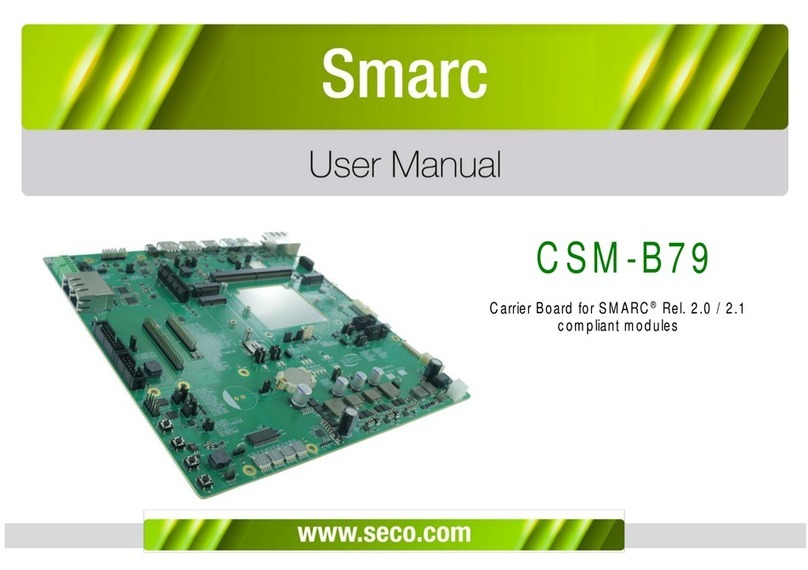
Seco
Seco Smarc CSM-B79 User manual
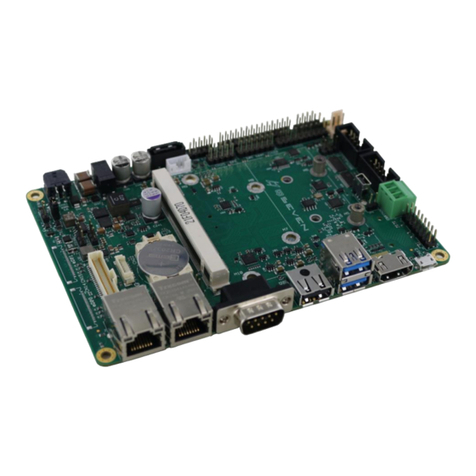
Seco
Seco Qseven CQ7-D59 User manual
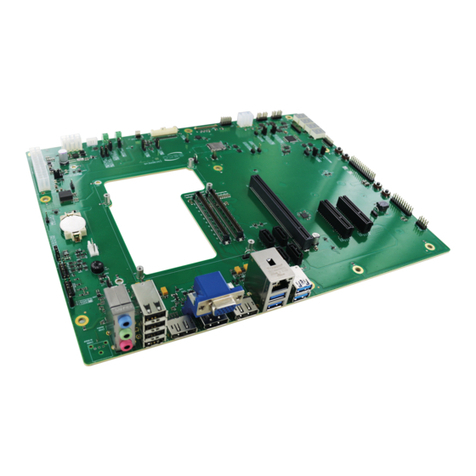
Seco
Seco COM-Express CCOMe-C96 User manual

Seco
Seco CCOMe-C30 User manual
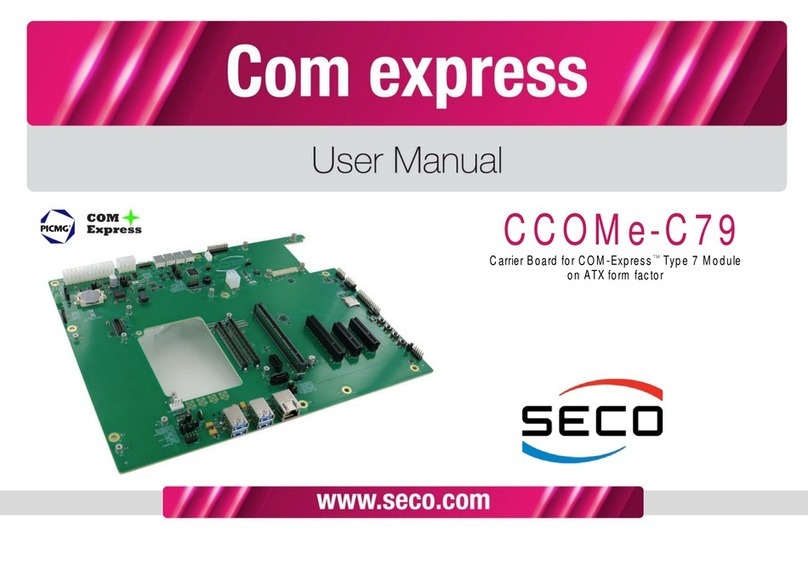
Seco
Seco COM-Express CCOMe-C79 User manual
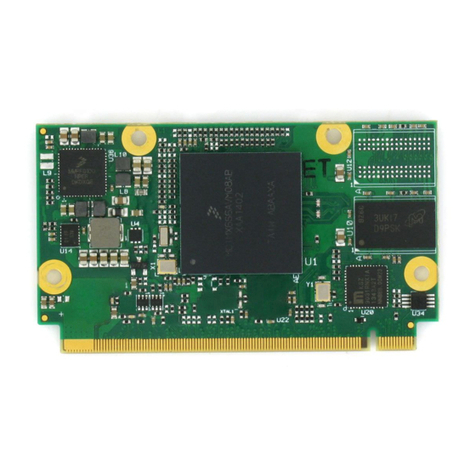
Seco
Seco Q7-A75-J User manual
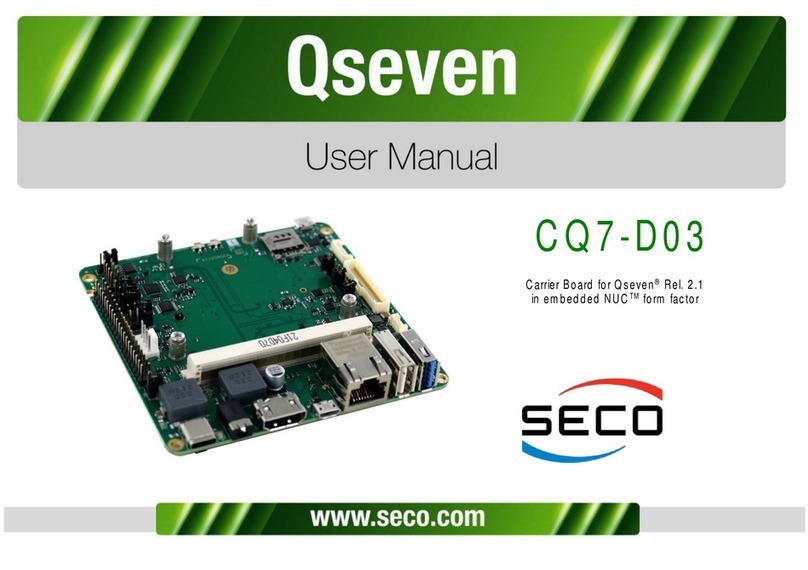
Seco
Seco Qseven CQ7-D03 User manual

Seco
Seco COM-Express CCOMe-965 User manual
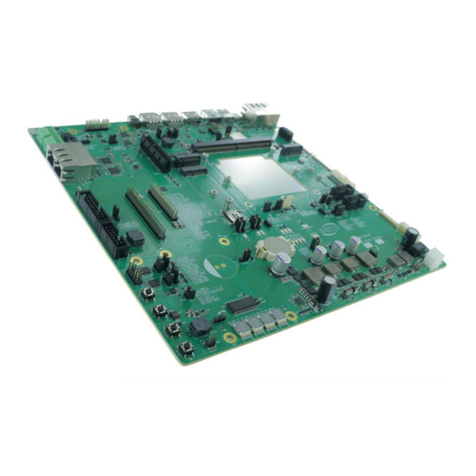
Seco
Seco Smarc SM-B79 User manual
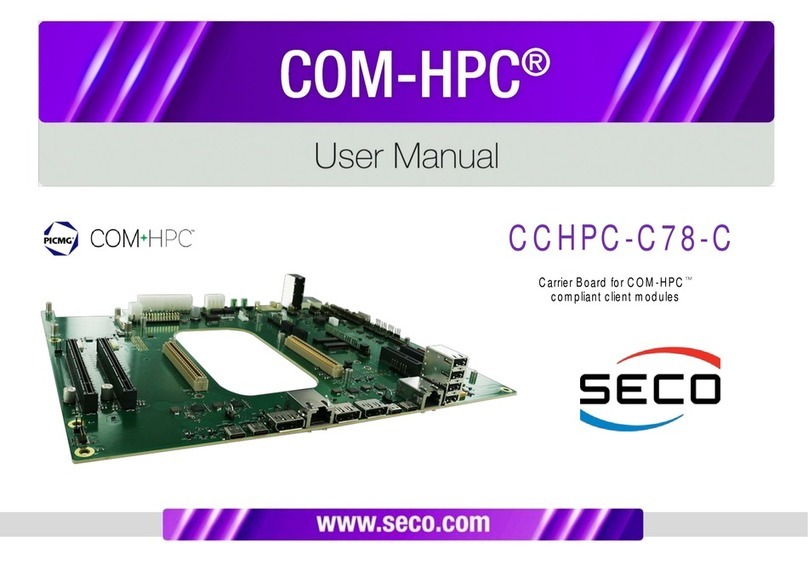
Seco
Seco CCHPC-C78-C User manual



